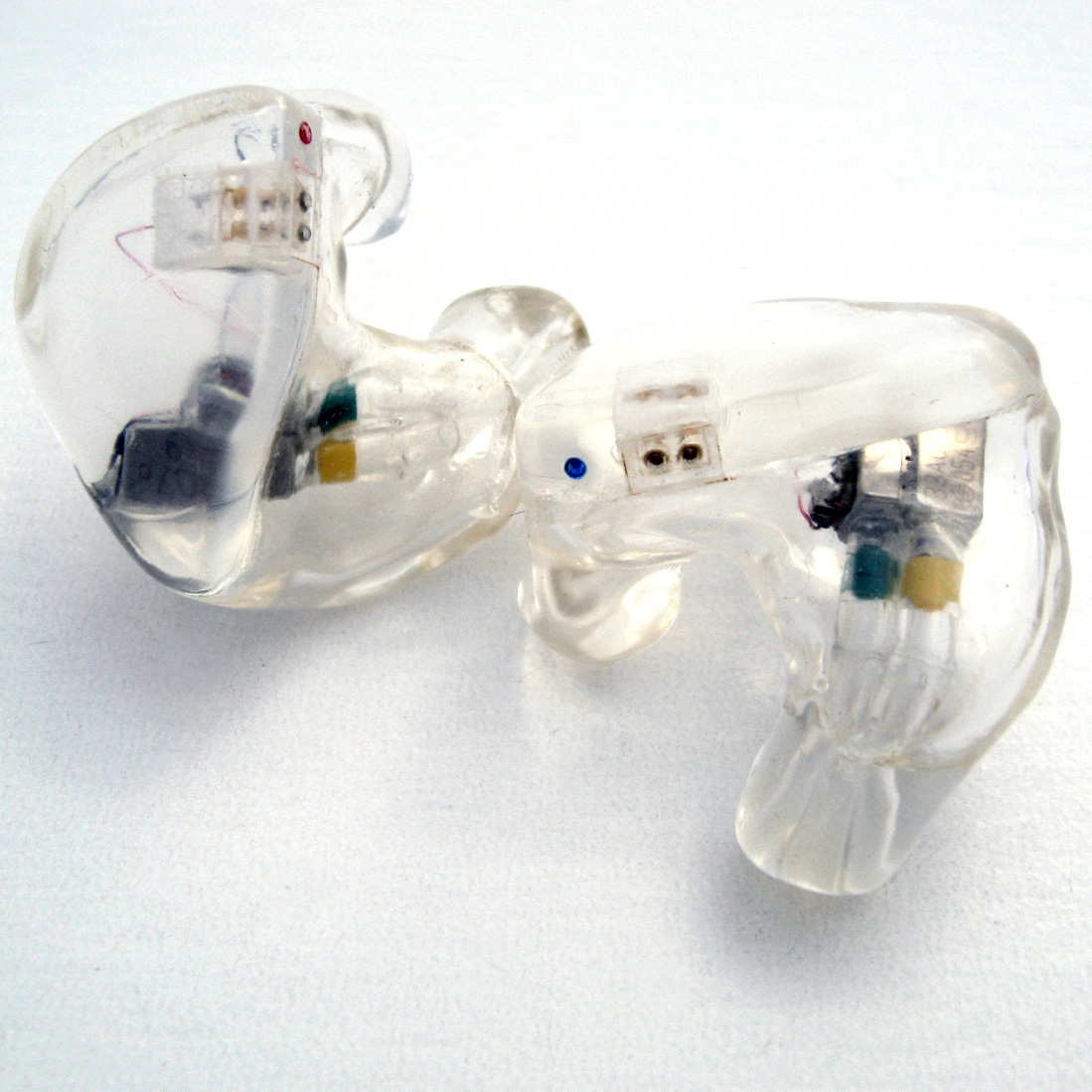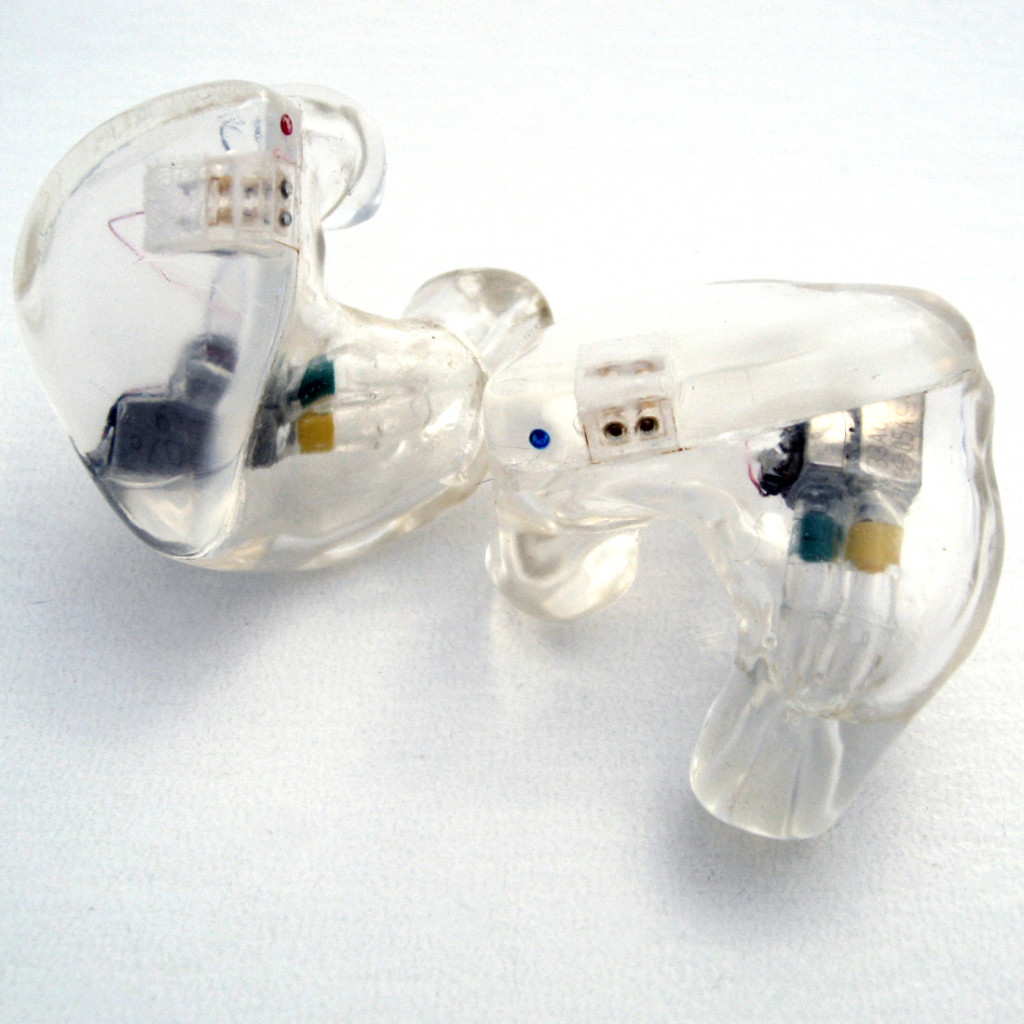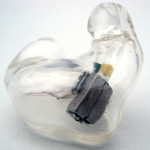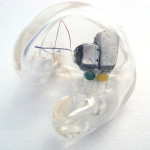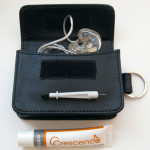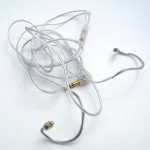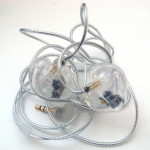Manufacturer: ProGuard
Model: P2+1
Price: £350.00 ($500 without VAT), $319.95 on amazon.co.uk
Country of Origin: United Kingdom
ProGuard Hearing Protection is a part of Sensorcom Ltd run by Rob and Richard (ex–Garwood, original manufacturer of IEM radio systems), both with around 25 years of audio and hearing protection experience. The ProGuard P2+1 was launched in 2013 and designed for the gigging musician. They felt many CIEMs lacked good low end response and auditioned quite a few triple driver configurations before selecting the current low and single high driver configuration, which they thought high the right retail price point.
Made in the United Kingdom, the P2+1 has some competition including Minerva, ACS, and Puretone among others, but the P2+1 is the lowest cost triple driver CIEM. Since it is made primarily for musicians, the focus is performance and not looks/artwork like many audio enthusiast focused products. How does the P2+1 stack up against the competition, and does it offer a good price/performance level?
HOW TO ORDER & OPTIONS
The base price of the P2+1 is £350 with VAT throughout the European Union, and £300 (~$500) when ordered elsewhere without VAT. If you are in the UK, adding impressions to your order will add £24. There are a few color options, but no artwork, and upgrading from the coated cable to a twisted cable will run £10, or about $14 outside the EU.
Ordering is done online via the shopping cart on the website, and the price will automatically remove VAT when appropriate. Payment can be made via Visa, MasterCard, and PayPal. If you purchase with impressions, you can select from the available audiologists here. Information on taking impressions can be found here, but open or closed mouth isn’t specified. I took my impressions with a 1/2″ bite block and have a good fit, and using a closed mouth will generally (depending on your anatomy) result in a tighter fit.
Options: Faceplate colors: black, beige, red, blue and translucent.
WARRANTY
The warranty period is 1 year and they keep your impressions on file for 2 years. Refits are done as necessary with a discretionary time period, but it is recommended to let them know of any fit issues as soon as you discover them.
DESIGN
The P2+1 is an acrylic shelled custom in-ear monitor with a triple balanced armature configuration, using a dual driver for the low frequencies and single driver for the high frequencies, crossed over at 2KHz. The cable is detachable, with standard 2-pin sockets flush mounted in the shell.
Manufacturer provided specifications:
Frequency Response: 20 – 18000Hz
Impedance: 20Ω @ 1kHz nominal
Sensitivity: 120dB@1mW
Crossover: Passive @ 2kHz
Connector: 3.5 mm stereo jack plug
Cable: Detachable 1.5m – Kevlar Reinforced PU 2 Pin Gold Plated Earphone Connectors
Transducer: Dual LF Balanced Armature Driver + Single HF Balanced Armature Driver
FIT & FINISH
The P2+1 fit & finish is average, with nothing special about them, but no complaints. The clarity of the transparent acrylic shell is good, but not great, and the overall finish of the shell is free from bubbles and defects, but not shiny or visually appealing as a few others can be. The inside of the shell is clearer than the faceplate. My P2+1 does not have any artwork or engraving, only a colored dot to indicate the pin orientation and channel for the detachable cables. 5/10
ACCESSORIES
The accessory pack includes a faux leather storage pouch, cleaning tool and earmould fitting gel. The carrying case is compact and easy to take anywhere, but doesn’t provide the crush-proof protection of a Pelican or Otterbox case included with many CIEMs. While the fitting gel is included, it shouldn’t be used to makeup for a poor fit, but will help with insertion and make for a better seal. 5/10
CABLE
The cable is detachable, 1.5m long, Kevlar reinforced cable with 2 pin gold plated pins that are standard size. The cable is silver but isn’t a typical twisted cable, which is offered as an upgrade, but is a coated cable and is very supple. The stock cable will not discolor over time like the twisted silver type, although a twisted black cable is another option. Twisted cables are available for an additional £10.
I have tried many coated cables and the ProGuard version is a bit softer and easier to use with less memory. I don’t see a large advantage to upgrading to the twisted cable, other than a slight improvement in ergonomics and less memory (i.e., it will fall in place better). This cable also seems a bit more durable than the standard twisted cables. 6/10
ISOLATION
Isolation is average for an acrylic shelled CIEM, which is better than most universal fit IEMs. Actual isolation will be dependent upon the fit and your anatomy and the manufacturer rates the isolation at up to 25dB. 5/10
SOUND
Disclaimer: My review is done in a comparative way using similarly priced IEMs and/or CIEMs for perspective and to determine performance. In this review I try to accurately portray the product under review, presenting strengths and weaknesses, the sound signature, characteristics, and technical performance as opposed to providing flowery dialog of performance without perspective. My ultimate goal is to enable you to make an informed decision about what product is right for you. Take the review as a critical look at the product and not a sales pitch or marketing fluff. I believe gear should be selected based on the sound signature you want and/or the specific use, not solely on technical performance or unsubstantiated hype. Here are some quick references for more information: My review technique, Thoughts on reading a review, Custom IEM information
The ProGuard P2+1 received 100+ hours of burn in as is customary before I do my serious listening. The following IEMs/CIEMs were used for comparison: InEarz IE-P250, Minerva Mi-Artist Pro, Minerva Mi-Performer Pro, Alclair Reference, Audio Earz aud-5X, Custom Art Music One, Lime Ears LE3b, EarSonics SM64, and Fit Ear PS-5.
Bass: The P2+1 has been designed to provide plenty of bass for stage use with a warm and present bass that is prominent, but isn’t the most prominent part of the frequency response. The warmth integrates well with the thicker midrange that is reminiscent of other IEMs designed for stage use. The quality of the bass is good, but not great and while detail levels are high, fine bass details and texturing that are present in higher priced CIEMs aren’t well defined.
Compared with dynamic driver IEMs in the price vicinity, the P2+1 has better control and a cleaner note, but less rumble capability. The ability to sustain bass notes is good, superior to the Alclair Reference and EarSonics SM64, but not to the level of the Dream Earz aud-5X or Ambient Acoustics AM4 pro. Compared with the new wave of CIEMs that incorporate the Sonion 1723 acupass driver, the bass performance is similar. The P2+1 extends all the way down, but the deep bass isn’t as prominent as 50Hz and above, and while 20Hz test tones are audible, the bass starts to audibly roll-off at around 29 Hz. The P2+1 integrates the bass well with the midrange and does a good of recreating the right amount of bass for stage use, being present, but not overpowering.
Midrange: The midrange is the most prominent part of the frequency spectrum, pulled a bit forward compared to the bass and more so from the treble, which is typical for a stage sound. There is a thickness to notes that results in a smooth presentation, which is still detailed, but this thickness doesn’t lend to great articulation of instrument detail, even though detail levels are good. There is an excellent balance between the midrange and upper midrange that gives vocals a natural sound, with female vocals being a strong point. Overall, the midrange has qualities that are favorable for a gigging musician.
Treble: Relaxed with a good balance between detail and smoothness, the treble is non-fatiguing and well integrated with the upper midrange. Note sustainment is good with no sharpness and the relaxed nature is void of sibilance. While overall quality is average for the price point, the P2+1 lacks the sharpness and issues that can come with poor mastering or low bitrate tracks. Using test tones, treble extended up to 15.5K, which is slightly below average, but not truly lacking. The treble quantity and quality are both excellent for stage use as well as those that are averse to harsh treble.
Presentation: Tuned for stage use, the ProGuard P2+1 presentation is similar to other stage use specific models, meaning the midrange is a bit more forward than the rest of the spectrum, the bass is prominent, and the treble is relaxed. Soundstage size is decent with good depth and very good imaging resulting in a presentation that is deep and 3D, revealing nuances within the soundstage. While note thickness is a bit thicker than neutral, the good detail level provides plenty of instrument detail and separation, although the detail isn’t as articulated as analytical CIEMs. Capability of recreating faster notes and sustaining longer notes is average for the price range.
Projection places you close to the music for an on-stage feel. Coherence is good while dynamics and transparency are average. The P2+1 isn’t a slouch in technical performance, but it won’t win any awards even though it paints a compelling picture of the track without being offensive. The presentation is well done for stage use.
Volume performance: The P2+1 performs its best at moderate to higher volumes, as would be the case for stage use. The more relaxed and smooth overall sound, non-aggressive deep bass, and treble are accentuated by the human loudness curves at lower volumes, leaving me wanting to turn the volume up during low volume listening. There are no real issues with the sound at low volume levels, but the P2+1 really shines with moderate or higher listening volumes.
Sound Summary: The repeating theme for the P2+1 is the stage monitor sound tuning, with a smoothness across the entire spectrum, prominent mids, powerful but not overpowering bass, and a relaxed treble for a non-fatiguing experience that puts you on the stage. The sound is a bit on the thicker side, which is typical for a stage sound signature, but the imaging and depth of presentation still provide plenty of clarity and an involving, 3D presentation. Coherence is very good across the frequency spectrum and performance is in line with the price point. While the P2+1 isn’t a giant killer, it is a purpose made CIEM that successfully does what it set out to do.
